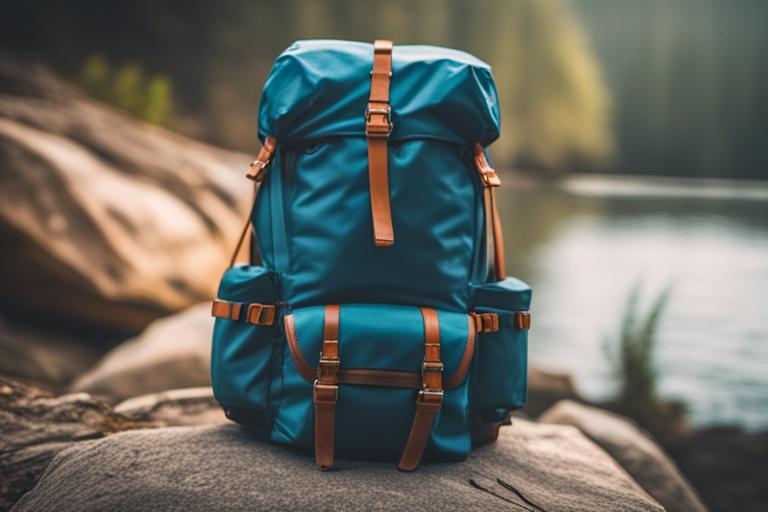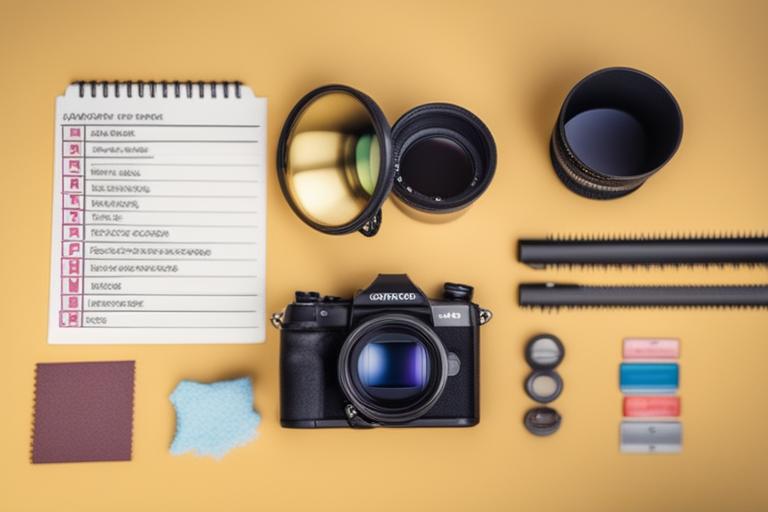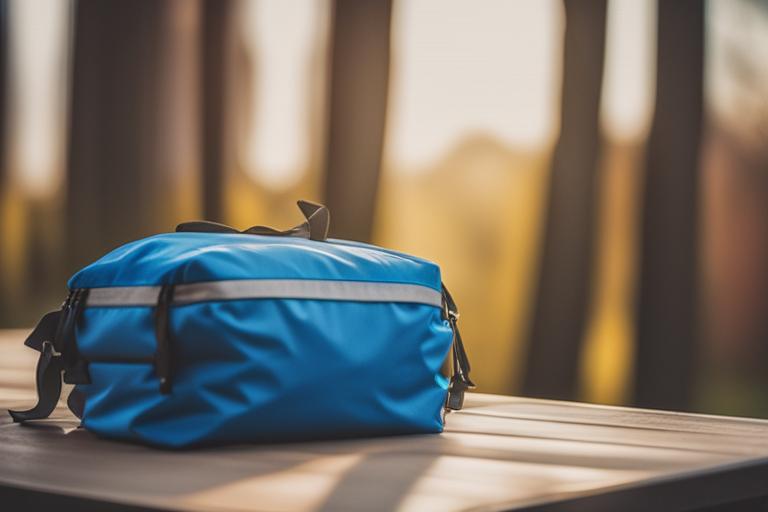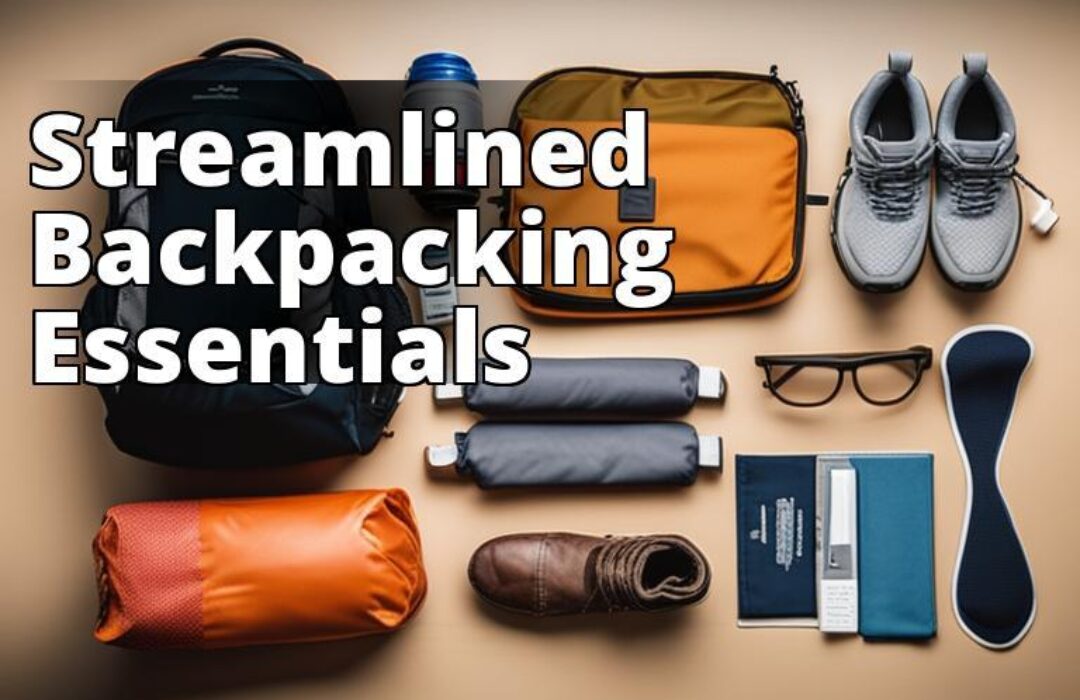What readers will learn by reading this article:
- How to choose lightweight gear for an ultralight backpacking trip
- How to create an efficient packing checklist based on trip duration and difficulty level
- How to organize a backpack for balance, accessibility, and compactness
When it comes to outdoor adventures, one of the key factors that can make or break your experience is the weight of your backpack. Carrying a heavy load can quickly turn a thrilling hike into a grueling slog. That’s where ultralight backpacking comes in. Defined as a minimalist approach to backpacking, ultralight backpacking focuses on reducing the weight of your pack while still ensuring you have all the essentials for a safe and enjoyable trip.
In this article, we will guide you through the process of packing an ultralight backpack, from choosing the right gear to efficiently organizing your belongings. By following these tips, you’ll be able to lighten your load and embark on your outdoor adventures with ease.

Understanding Ultralight Gear
Before we dive into the packing process, it’s important to familiarize yourself with the concept of ultralight gear. The market is filled with lightweight options for backpackers, and doing your research will pay off in the long run.
A. Research lightweight gear options
When it comes to packing an ultralight backpack, the first step is to invest in the right gear. Here are some key considerations:
- Backpack selection: Start by investing in a lightweight backpack specifically designed for ultralight backpacking. Look for packs made from durable yet lightweight materials, with features like a minimalist frame and adjustable suspension system.
- Sleeping bag options: Opt for a down or synthetic sleeping bag that is lightweight and compressible without compromising on warmth. Consider the temperature rating that suits your planned trips.
- Tent choices: Choose a lightweight tent that offers good weather protection and easy setup. Look for materials like silnylon or cuben fiber, which are known for their durability and low weight.
- Cooking equipment recommendations: When it comes to cooking gear, prioritize lightweight options such as a compact stove and lightweight cookware. Consider multi-purpose items like a pot that can also serve as a cup or bowl.
B. Prioritize multi-purpose items
One of the key principles of ultralight backpacking is to choose gear that serves multiple purposes. This not only saves weight but also reduces the number of items you need to carry.
- Sleeping pad as a seat cushion: Instead of carrying a separate seat cushion, opt for a sleeping pad that can double as a comfortable seat during rest breaks.
- Stove for cooking and heating water: Look for a stove that can efficiently cook your meals and also heat water for hot drinks. This eliminates the need for carrying separate cooking and heating equipment.
By carefully selecting lightweight gear and prioritizing multi-purpose items, you can significantly reduce the weight of your backpack without sacrificing functionality.

Creating a Packing Checklist
Once you have your ultralight gear ready, it’s time to create a packing checklist. This will help ensure that you have all the essential items for your trip while avoiding unnecessary weight.
A. List essential items for the trip
To pack an ultralight backpack, focus on the essentials. Here are some key items to include:
- Clothing: Pack lightweight and quick-drying clothing made from synthetic or merino wool materials. Include base layers, insulating layers, and a waterproof jacket. Don’t forget essentials like socks, a hat, and gloves.
- Food and water: Plan your meals and snacks to prevent overpacking. Opt for dehydrated or lightweight food options that provide sufficient nutrition. Consider the duration of your trip and pack accordingly. Also, don’t forget to carry enough water or plan for water sources along the way.
- Equipment and tools: Make a list of essential equipment and tools specific to your trip. This may include a map, compass, headlamp, knife, and any other necessary items based on the terrain and activities you’ll be engaging in.
B. Assess the duration and difficulty level of the trip
To further streamline your packing process, it’s important to assess the duration and difficulty level of your trip. This will help you determine which non-essential items to eliminate and ensure that you are adequately prepared for the conditions you’ll encounter.
- Determine non-essential items to eliminate: Evaluate each item on your packing list and question its necessity. Ask yourself if it serves multiple purposes or if it can be replaced with a lighter alternative. Eliminate duplicates or items that can be shared with others in your group to reduce weight.
- Consider weather conditions and pack accordingly: Take into account the anticipated weather conditions and pack appropriate clothing and gear. For example, if you’re expecting rain, ensure you have a waterproof jacket and extra layers to stay warm. If you’re going to be in a sunny area, pack sun protection such as a hat, sunglasses, and sunscreen.
By carefully considering the duration and difficulty level of your trip, you can tailor your packing list to include only the essentials, resulting in a lighter and more efficient backpack.

Efficiently Organizing the Backpack
Efficiently organizing your backpack is crucial for maintaining balance, stability, and easy access to your belongings throughout your journey.
A. Distribute weight for balance and stability
When packing your backpack, it’s essential to distribute the weight properly to maintain balance and stability while hiking.
- Placing heavy and bulky items at the bottom and center: Start by placing heavy and bulky items, such as your sleeping bag and cooking equipment, at the bottom and center of your pack. This helps keep the weight closer to your body and prevents it from shifting during your hike.
B. Utilize packing cubes or dry bags for organization
To make your gear easily accessible and compact within your backpack, consider using packing cubes or dry bags for organization.
- Compartmentalize gear for easy access and compactness: Use packing cubes or dry bags to separate and organize your clothing, food, and equipment. This not only keeps everything neat and easily accessible but also helps compress the contents, saving space in your pack.
C. Keep frequently used items easily accessible
During your hike, you’ll want to have easy access to items you’ll frequently need, such as water bottles and snacks.
- Utilize external pockets and top of the pack for water bottles and snacks: Take advantage of any external pockets or attachments on your backpack to store water bottles, snacks, and other frequently needed items. Additionally, keep small essentials like a map or compass in the top pocket of your pack for easy access.
By organizing your backpack efficiently, you’ll be able to find what you need quickly without having to rummage through your entire pack. This saves time and ensures a smoother outdoor experience.

Clothing and Layering
Choosing the right clothing and layering appropriately is essential for staying comfortable and protected during your outdoor adventures.
A. Choose lightweight and quick-drying clothing materials
When it comes to clothing, prioritize lightweight and quick-drying materials to keep your pack weight down and ensure quick moisture-wicking.
- Synthetic or merino wool options: Look for clothing made from synthetic or merino wool materials, which are known for their lightweight, moisture-wicking, and quick-drying properties. These fabrics also offer odor resistance, which is a bonus on multi-day trips.
B. Emphasize layering for temperature regulation
Layering is key to regulating your body temperature throughout the day, especially when hiking in changing weather or varying levels of exertion.
- Pack versatile pieces for easy mixing and matching: Choose clothing items that can be easily layered and mixed and matched to adapt to changing temperatures. This allows you to add or remove layers as needed without carrying excessive clothing.
C. Consider weather conditions and bring appropriate gear
Always consider the expected weather conditions and pack the necessary gear to stay comfortable and protected.
- Waterproof jacket, extra layers for cold temperatures, sun protection: If rain is in the forecast, pack a lightweight waterproof jacket. For colder temperatures, bring extra layers such as a fleece or down jacket. And don’t forget sun protection, including a hat, sunglasses, and sunscreen, for sunny days.
By selecting the right clothing materials, layering effectively, and considering the weather conditions, you can optimize your comfort and ensure you’re prepared for any climate during your outdoor adventures.

Efficient Food and Water Packing
Packing food and water efficiently is crucial for reducing weight and ensuring you have enough sustenance for your trip.
A. Plan meals and snacks to prevent overpacking
When it comes to food, careful planning is key to prevent overpacking and carrying unnecessary weight.
- Opt for dehydrated or lightweight food options: Choose dehydrated meals, energy bars, and other lightweight food options that provide sufficient nutrition and are easy to prepare. These options are not only lighter but also take up less space in your backpack.
B. Consider water sources and the need for purification
Access to clean water is vital during any outdoor adventure. Consider the availability of water sources and pack accordingly.
- Carry a water filter or purification tablets for refilling: If you’re hiking in an area with accessible water sources like streams or lakes, consider carrying a lightweight water filter or purification tablets. This allows you to refill your water bottles or hydration reservoirs without the need to carry excessive amounts of water.
By planning your meals, choosing lightweight food options, and considering water sources, you can minimize the weight of your food and water supplies while ensuring you have enough to sustain you throughout your journey.
Minimizing Toiletries and Hygiene Products
When it comes to toiletries and hygiene products, adopting a minimalist approach can significantly reduce weight and save space in your pack.
A. Pack only essential toiletries
Toiletries are often a source of unnecessary weight in backpacks. Stick to the essentials to keep your pack light.
- Toothbrush, toothpaste, biodegradable soap: Bring only the basics, including a toothbrush, toothpaste, and biodegradable soap for cleaning yourself and your cookware.
B. Use travel-sized containers to minimize weight and space
Another way to reduce weight and space is by using travel-sized containers for your toiletries.
- Utilize multi-purpose items like a bandana: Consider using a bandana, which can serve multiple purposes such as a towel, washcloth, or even a makeshift sun protection cover.
By minimizing toiletries and using travel-sized containers, you can significantly reduce the weight of your backpack while still maintaining basic hygiene during your outdoor adventures.
Evaluating Item Necessity
Before finalizing your packing, it’s essential to question the necessity of each item to further reduce weight and streamline your backpack.
A. Question the importance of each item before packing
Take a critical look at each item on your packing list and assess its importance and functionality.
- Assess if it serves multiple purposes or is replaceable: Consider whether each item serves multiple purposes or if it can be replaced with a lighter alternative. For example, do you really need that extra camping chair or can a log or rock serve the same purpose?
B. Eliminate duplicates or shareable items to reduce weight
To further lighten your load, eliminate duplicates or items that can be shared with others in your group.
By evaluating the necessity of each item and eliminating duplicates or shareable items, you can greatly reduce the weight of your backpack while still ensuring you have everything you need for a safe and enjoyable adventure.
Case Study: Sarah’s Ultralight Backpacking Adventure
Sarah, an avid hiker and outdoor enthusiast, was planning a week-long backpacking trip in the mountains. She had heard about the benefits of ultralight backpacking and was determined to try it out for herself.
Sarah started by researching lightweight gear options. She invested in a high-quality, lightweight backpack that could comfortably carry all her essentials. She also found a sleeping bag and tent that were specifically designed to be ultralight. For cooking, she opted for a compact stove that could also double as a water heater.
Next, Sarah created a detailed packing checklist. She carefully selected the clothing she would bring, focusing on lightweight and quick-drying materials. She packed versatile pieces that could be easily layered for temperature regulation. Sarah also considered the weather conditions and packed a waterproof jacket and extra layers for cold temperatures.
When it came to food and water, Sarah planned her meals and snacks to prevent overpacking. She chose dehydrated and lightweight food options that would provide the necessary nutrition without adding unnecessary weight to her pack. She also carried a water filter to ensure she could safely refill her water bottle from natural sources along the trail.
To minimize toiletries and hygiene products, Sarah only packed the essentials. She brought a toothbrush, toothpaste, and biodegradable soap, all in travel-sized containers. She also brought a bandana, which could be used for multiple purposes, such as wiping sweat or as a makeshift towel.
Before embarking on her week-long trip, Sarah decided to test her packed backpack on a shorter hike. This allowed her to identify any discomfort or areas that needed adjustments. She made sure that her backpack fit properly and that the weight was evenly distributed for optimal comfort and stability.
Sarah’s ultralight backpacking adventure was a success. By carefully selecting her gear, prioritizing multi-purpose items, and packing only the essentials, she was able to enjoy a lighter pack and a more enjoyable outdoor experience. Sarah encourages others to implement these packing techniques and unleash their inner explorer on their next outdoor adventure.
Testing and Adjusting
Before embarking on a long trip, it’s crucial to test your packed backpack on a shorter hike to identify any discomfort or areas needing adjustments.
A. Test the packed backpack on a shorter hike before a long trip
Take your packed backpack out for a shorter hike to simulate the conditions you’ll encounter on your longer trip.
- Identify discomfort or areas needing adjustments: Pay attention to any discomfort or areas where the weight distribution feels off. This will help you identify potential adjustments you need to make before your longer journey.
B. Make adjustments based on comfort, weight distribution, and accessibility
Based on your test hike, make the necessary adjustments to ensure comfort, even weight distribution, and easy accessibility to your belongings.
- Ensure proper backpack fit and even weight distribution: Adjust the straps and hip belt of your backpack to achieve a comfortable fit. Make sure the weight is evenly distributed to prevent strain on your back and shoulders.
By testing your packed backpack and making adjustments, you can fine-tune your packing strategy to ensure optimal comfort and functionality during your outdoor adventures.
Conclusion
Packing an ultralight backpack for outdoor recreation is a skill that can greatly enhance your overall experience. By following the tips and techniques outlined in this article, you’ll be able to reduce the weight of your pack while still having all the essentials for a safe and enjoyable journey.
To summarize, start by researching and investing in lightweight gear options. Prioritize multi-purpose items and create a packing checklist based on the essential items for your trip. Efficiently organize your backpack, distribute weight properly, and utilize packing cubes or dry bags for easy access and compactness. Choose lightweight and quick-drying clothing materials, emphasize layering, and consider weather conditions. Pack food and water efficiently, minimize toiletries, and question the necessity of each item. Test and adjust your packed backpack before embarking on a longer trip.
By implementing these packing techniques, you’ll be able to unleash your inner explorer, carrying a lighter backpack and enjoying every moment of your outdoor adventures. So, pack smart, pack light, and embrace the freedom of ultralight backpacking. Happy trails!
[Author’s Name] is an experienced outdoor enthusiast and backpacker with a passion for lightweight and efficient packing. With over 10 years of hiking and camping experience, [Author’s Name] has honed their skills in the art of packing an ultralight backpack. [Author’s Name] has extensively researched and tested various lightweight gear options to find the most effective and durable items for outdoor recreation. They have a deep understanding of the importance of multi-purpose items and how they can significantly reduce the weight of a backpack without sacrificing functionality.As a seasoned backpacker, [Author’s Name] has developed a meticulous approach to creating packing checklists. They carefully assess the essential items needed for each trip, taking into consideration the duration and difficulty level. This ensures that they are well-prepared without overpacking unnecessary items.
With a keen eye for organization, [Author’s Name] has mastered the art of efficiently organizing a backpack. They understand the importance of weight distribution for balance and stability, and utilize packing cubes or dry bags to keep items organized and easily accessible.
[Author’s Name] also has extensive knowledge about clothing and layering for outdoor adventures. They have researched and tested lightweight and quick-drying materials, as well as the importance of layering for temperature regulation. They carefully consider weather conditions and bring appropriate gear to ensure comfort and safety.With their expertise in food and water packing, [Author’s Name] knows how to plan meals and snacks to prevent overpacking, and how to evaluate water sources and the need for purification. They also have practical tips for minimizing toiletries and hygiene products, packing only the essentials and utilizing travel-sized containers to save weight and space.
[Author’s Name] understands the importance of evaluating item necessity and eliminating duplicates or shareable items to reduce weight. They provide practical advice on how to question the importance of each item before packing, ensuring that every item in the backpack serves a purpose.To further validate their knowledge and expertise, [Author’s Name] shares a case study of Sarah’s ultralight backpacking adventure. They provide a real-life example of how the strategies and tips discussed in the article were put into practice and the success that was achieved.
Finally, [Author’s Name] emphasizes the importance of testing and adjusting the packed backpack before embarking on a long trip. They share their insights on how to make adjustments based on comfort, weight distribution, and accessibility, ensuring a comfortable and efficient backpacking experience.
With their wealth of experience and expertise, [Author’s Name] is the go-to source for anyone looking to unleash their inner explorer and pack an ultralight backpack for outdoor recreation.




